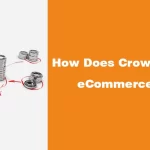Fashion trends are constantly changing, but some styles have managed to stay in demand for decades. As a new e-commerce seller navigating the intricate world of fashion, you may find yourself overwhelmed by the multitude of styles adorned by consumers.
But you don’t need to worry. I’ve put this guide together to show you 9 popular fashion styles you can consider building your brand around and to explain their appeal and target audiences.
That way, you can make well-informed decisions about your brand identity, your product selection, and targeting your marketing to the right audiences.
From nostalgic retro wear to streetwear, let’s dive into each style and its characteristics.
Retro Fashion
Retro fashion simply refers to styles that were popular years ago, typically anything 20 years and older. Although, it’s mostly associated with 1920s to 1980s clothing.
As each era has different styles, it’s important to remember that the term “retro fashion” be applied in different contexts. For example, the 1950s is one retro era and the 1970s is another retro era.
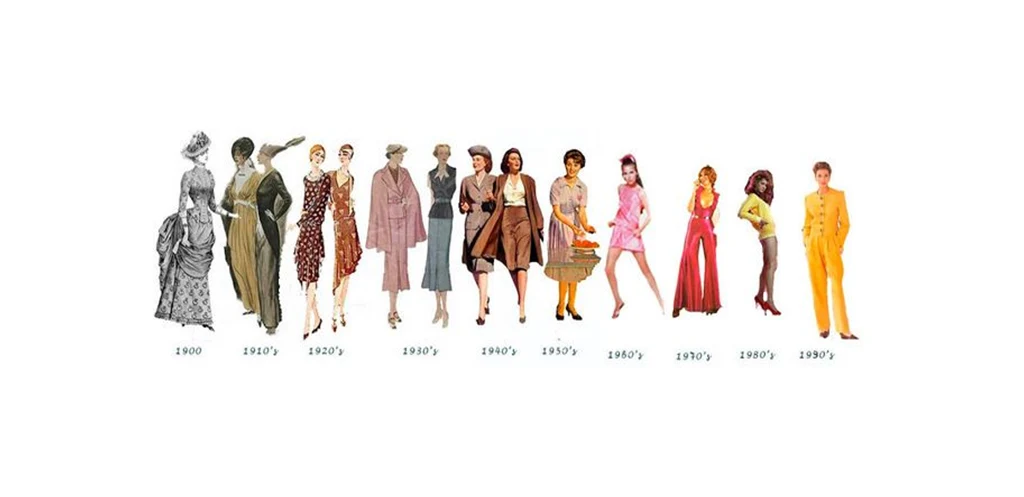
Common retro products for women could feature 20s-themed flapper dresses or 70s bell-bottoms. While, for men retro clothing would entail three-piece suits from the 50s or colorful 70s disco outfits, among others.
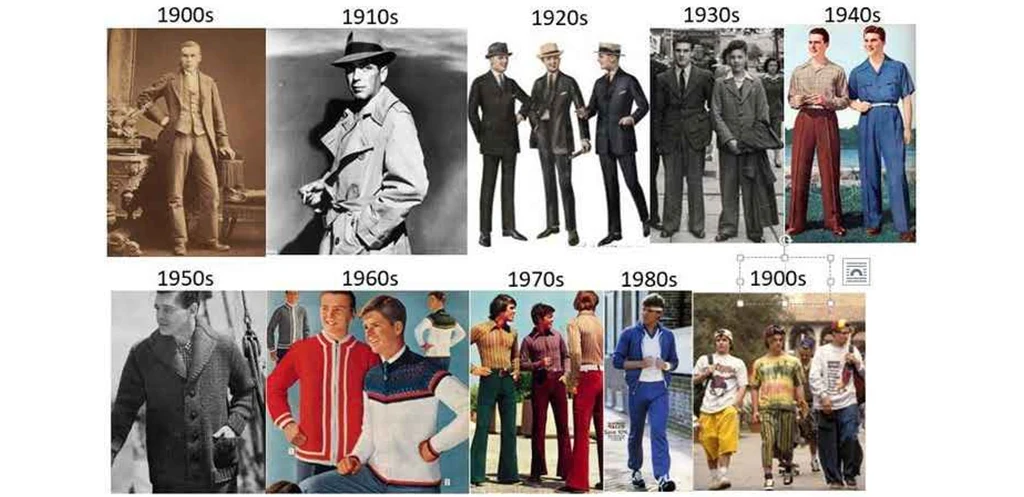
In the case of your clothing store, you may decide to sell products from a single era or multiple eras. The first option allows you to craft a consistent brand around a particular era. But you risk losing profitability if the customer base and demand for it are too low.
The latter allows you to serve a wider audience and adapt to trends if an era loses or gains popularity. However, customers might have difficulty understanding your store’s focus if you fail to offer a coherent brand identity, especially if the eras you serve have wildly different aesthetics. So weigh your options wisely.
Streetwear
Streetwear is a casual fashion style originally inspired by surf, skate, and hip-hop. Today, streetwear incorporates elements from various cultures and ethnic groups like K-POP, sports, graffiti art, haute couture (exclusive) fashion, and more.
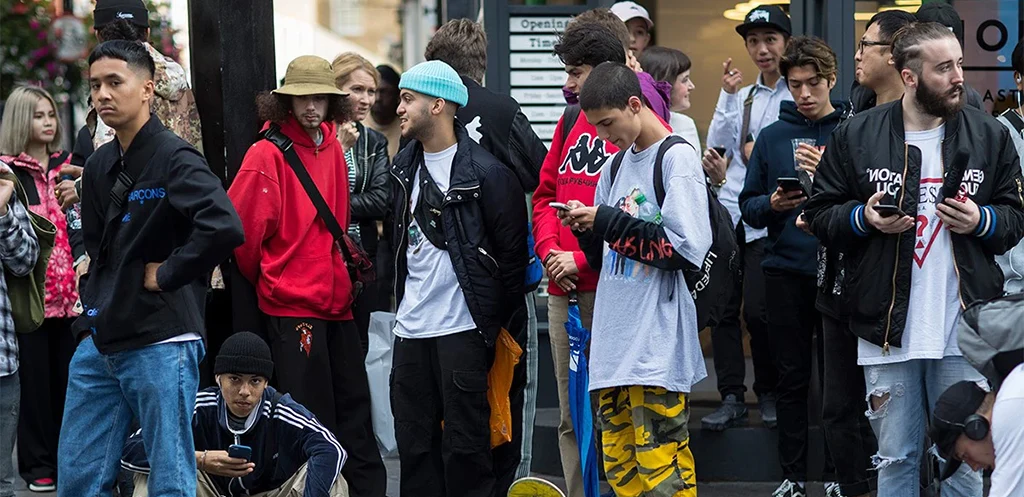
Common men’s streetwear products include graphic t-shirts, bomber jackets, caps, ripped jeans, hoodies, tracksuits, stylish sneakers and beanies. Whereas, women’s streetwear often features crop tops, baggy pants, sweatpants, hoodies, sneakers, joggers, and more.
According to Hypebeast’s study, most streetwear consumers tend to be teenagers and young adults in their 20s to 30s. These followers are also found to live in urban areas and belong to subculture groups (i.e. skateboarders, hip-hop fans, surfers, etc.).
Respondents also reported the two most attractive features of streetwear to be “coolness” and “comfort”. This is because the original promise of streetwear was to blend the allure of high fashion with the practicality of simple everyday wear.
Hip Hop
Hip-hop (or rap) fashion, originating from Urban Black America and New York’s inner-city youth is a popular fashion style intertwined with hip-hop culture.
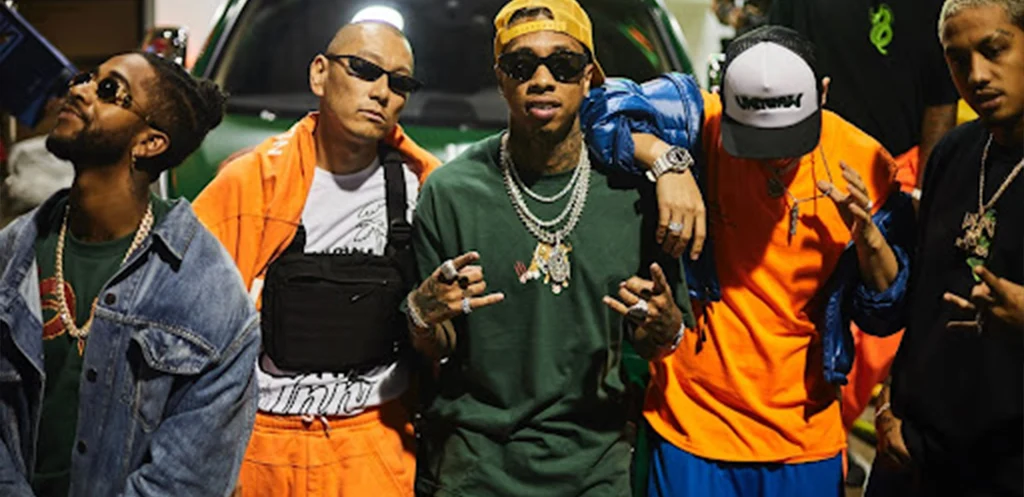
Staple men’s rap fashion products typically include bold designer ensembles, denim, chains, sneakers, saggy pants, bomber jackets, sunglasses, and more.
Meanwhile, women’s hip-hop fashion embraces products like skinny jeans, short skirts, bra tops, handbags, gold name chains, baggy pants, and more
Hip-hop clothing has a youthful and rebellious appeal that resonates with the younger individuals who buy it the most. Furthermore, it serves as a medium for hip-hip enthusiasts to express their fondness for the music and the lifestyle.
Harajuku
Harajuku fashion, a fusion of Western-influenced Japanese subcultures, is a whole clothing movement intentionally designed to break free from old Japanese dressing norms.
It’s an expressive blend of funk, goth, cosplay, dolly kei, punk, fairy, lolita. It is characterized by bold, colorful, and even cartoonish designs or sometimes gloomy, goth-esque color patterns and dresses.
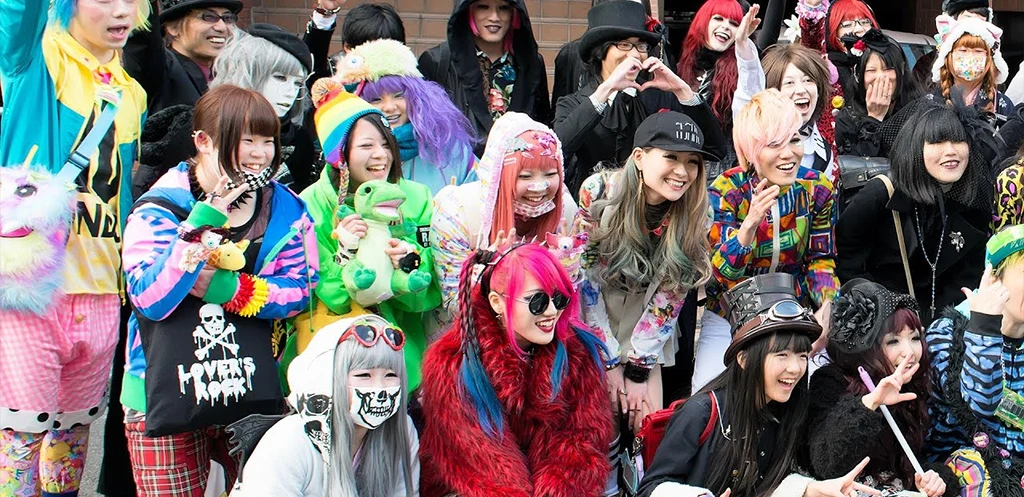
Essential harajuku products for women include plaited dresses, high-rise socks, hats, platform shoes, kimonos, graphic shirts, leggings, accessories, and more.
Whereas, men’s Harajuku wear commonly includes graphic shirts, wide-leg pants, caps, oversized outerwear, and colorful outfits in general.
Harajuku is most popular among Japanese teen sub-groups and adults in their 20s to 30s, as well as tourists in Tokyo’s Harajuku district who seek a unique cultural experience.
The style’s main appeal lies in its playful and uncommon nature that accepts individualism and encourages self-expression. With bold prints, vibrant colors, and whimsical accessories, wearers of all genders and ages can express their creativity through Harajuku’s multitude of options.
Y2K
Y2K (Year 2000) fashion, also called “Gen Z” or “Millennial” fashion, is an aesthetic spanning from the early 1990s and 2000s when the internet was just emerging and smartphones were relatively new.
Often described as “futuristic” Y2K styles are technology-inspired and characterized by shiny materials, leather ensembles, space-age accessories, and matching sets.
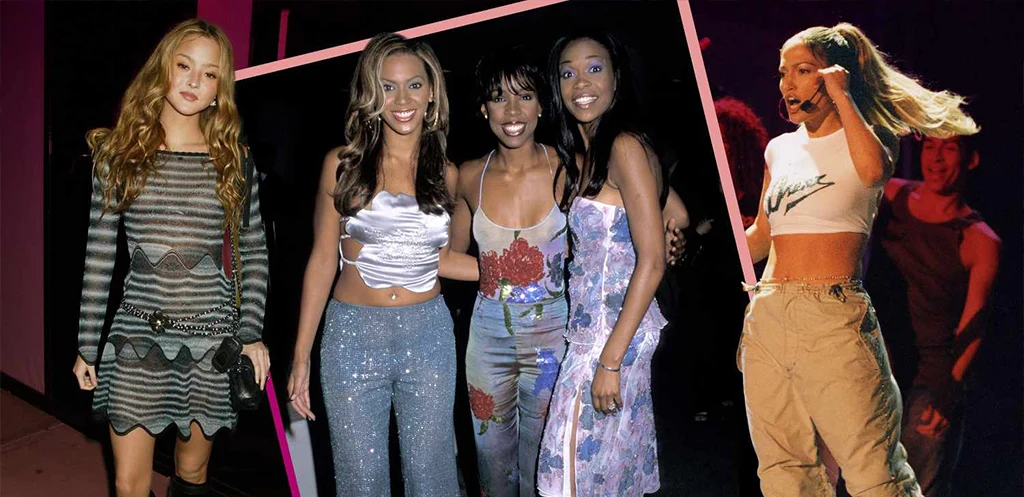
Classic women’s Y2K outfits feature bold patterns and toned colors and include products like crop tops, low-rise jeans, denim, matching sets, chokers, body chains, graphic tees, and more.
Men’s Y2K fashion, on the other hand, frequently includes products like ripped and baggy jeans, chunky belts, skater shoes, logo-heavy tops, visor sunglasses, chain necklaces, and more
As you might figure, Y2K clothing is most popular among Gen Z and millennials. One reason is its appeal to nostalgia. Many Y2K consumers, currently in their 20s-30s, grew up in the 2000s when Y2K first emerged and now it provides a way to relieve their youthful trends.
High Street
High street fashion refers to trendy, affordable, and readily available clothing, rather than high-end designer garments. The term originates from old England when it was used to refer to clothing you could buy on ordinary streets and retail stores.
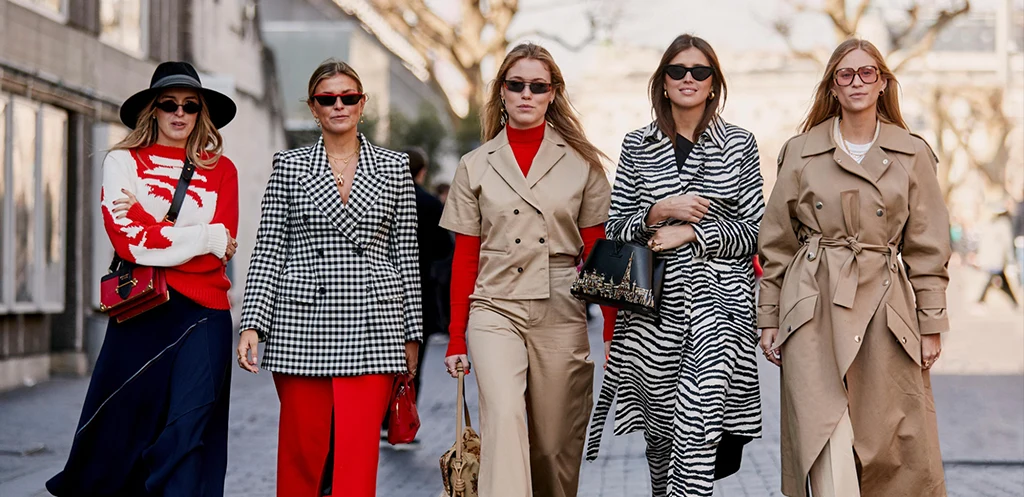
Common high-street fashion products for women include skinny jeans, button-down shirts, ankle boots, wide-leg pants, crossbody bags, denim and more. Whereas, typical high-street fashion items for men include tailored pants, bomber jackets, baggy jeans, and crew-neck shirts.
At its core, high-street fashion is designed to be accessible to a wide range of consumers. Hence, its central appeal lies in the frequent introduction of new collections (for various styles) and the affordability of those wears.
Punk
Punk fashion refers to the anti-mainstream clothes, hairstyles, and accessories of various punk subcultures.
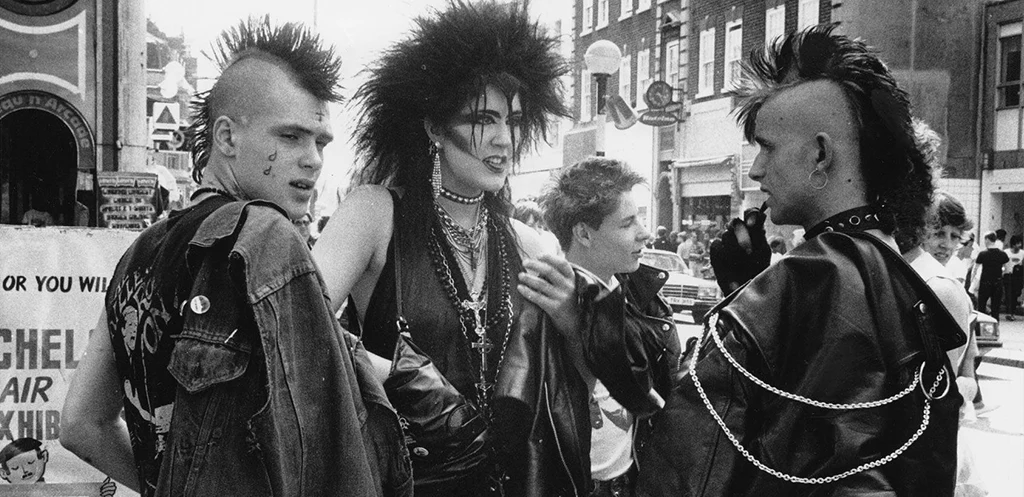
The fashion style is often characterized by showy graphic elements, dark makeup, unisex wear, leather ensembles, torn clothing, chunky footwear, body chains, and spiked hair and accessories in general.
Signature punk products include band tees, studded leather jackets and vests, combat boots, metal spikes, ripped jeans, chokers, and chain accessories.
Women’s punk fashion, on the other hand, typically includes plaid skirts, fishnet ensembles, platform boots, spiked jewelry, tank tops, and more.
For punk enthusiasts, the fashion and lifestyle movement is about being unafraid to experiment. Generally, punks stray away from what society considers “mainstream” and “girly” for ladies.
From hairstyles to clothing and accessory choices, it’s impossible to miss the individual personalities and traits that make punk dressing unique.
Gothic
Born in the 80s, Gothic fashion is the general term for several related fashion styles marked by dark, dramatic, and unisex elements.
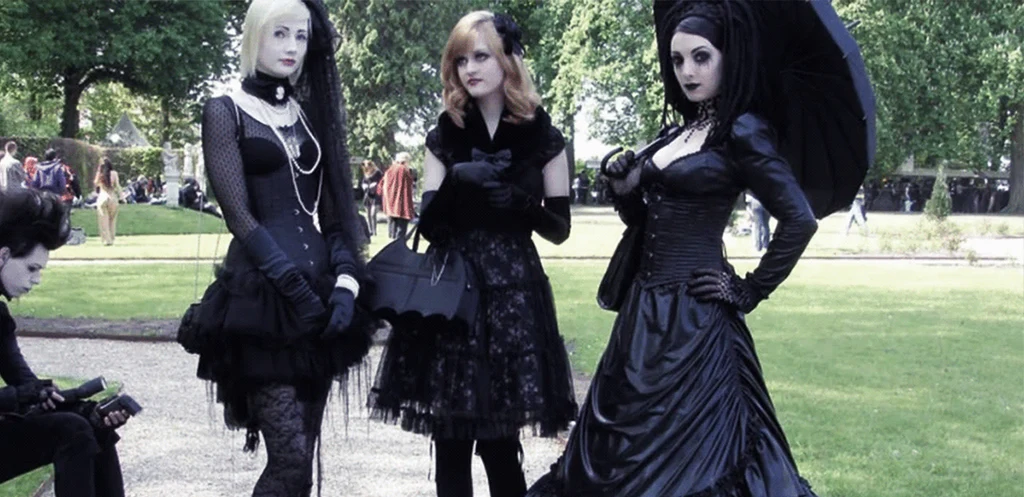
Generally, Gothic aesthetics are characterized by dark clothing, hair, and makeup, contrasted by pale skin and accessories reminiscent of the Victorian era.
Staple goth attires for women include long flowing black dresses, fishnet socks, petticoats, black skirts, purple or blood-red accessories, dramatic makeup, ankle boots, and more. Whereas, men’s goth clothing usually includes black coats, band t-shirts, leather jackets, skinny jeans, and tall platform boots.
Goth fashion is more than just a style; it’s a subculture that, ironically, allows individuals to come together to express their individuality and nonconformity.
Preppy
Dating back to the 1890s and early 1900s, preppy fashion is a clothing style originating in American preparatory and Ivy League schools.
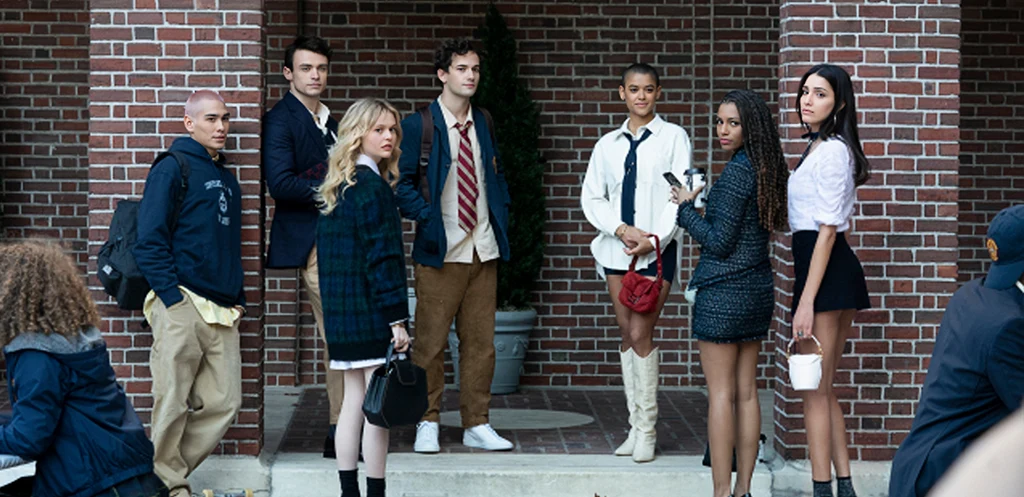
For most people, preppy brings to mind “upper class,” as its garments are inspired by leisure activities like golf, sailing, tennis, squash, and horse riding. Furthermore, it adapts elements of traditional British country clothing and college fashion like blazers, cardigans, and ties.
For men, staple preppy-style products include polo shirts, chino pants, loafers, layered outfits, patterned ties, boat shoes, and cardigans.
Meanwhile, common preppy clothing for women features collared dresses, button-down shirts, pearl accessories, tennis shoes, pleated skirts, loafers, trench coats, blazers, and cable knit sweaters, to mention a few.
Even though preppy style started over 100 years ago, it’s being adopted by designers all over the world today like Polo Ralph Lauren, J Crew, and Tommy Hilfiger.
One reason for this is its timeless appeal. Preppy fashion is characterized by classic, intentionally-style designs that aren’t swayed by changing fashion trends.
Final Thoughts
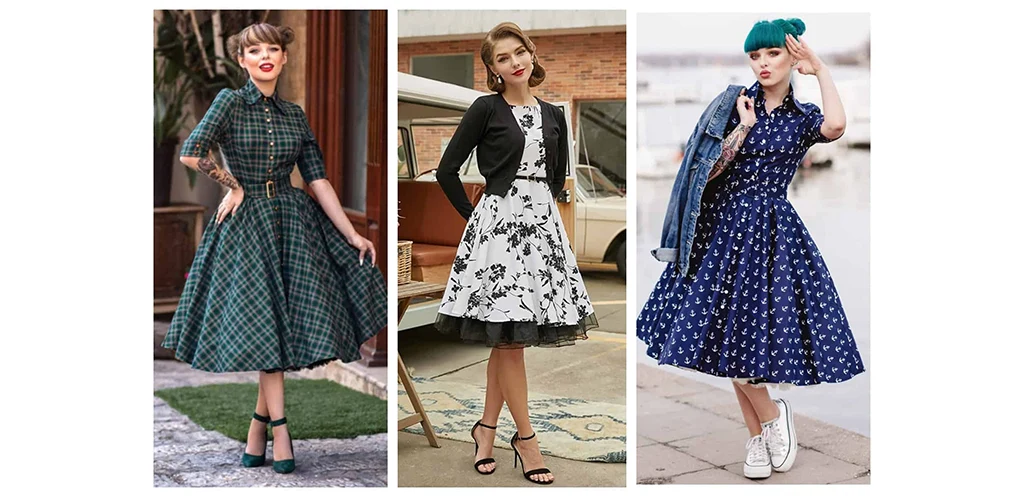
Now that we’ve explored these 9 fashion styles, you might be wondering what to do next.
Well, I suggest comparing a few styles that interest you and researching deeper into their potential audiences, your competitors, and each style’s overall profitability.
By doing this thorough analysis, you’ll be able to identify the trends that resonate with your target audience, learn the strategies your competitors are employing, and assess your chances of making money with each style.
Additionally, as a seller new to ecommerce fashion, you might want to check out Globallyfulfill, our one-stop order fulfillment service.
Our professionals help new and upcoming business owners like you to ease the challenges of selling online by providing branding, sourcing, quality control, warehousing, product packaging, shipping and returns assistance. With our help, even total beginners don’t need to worry much about how to fulfill their products. Reach out to us today!













